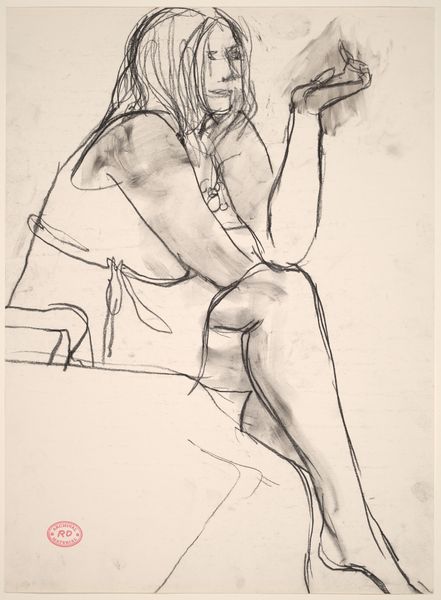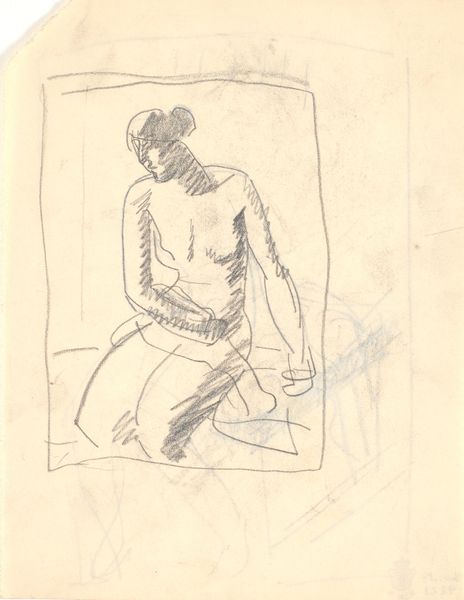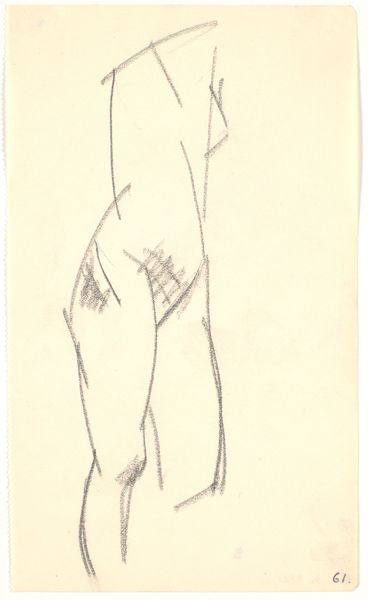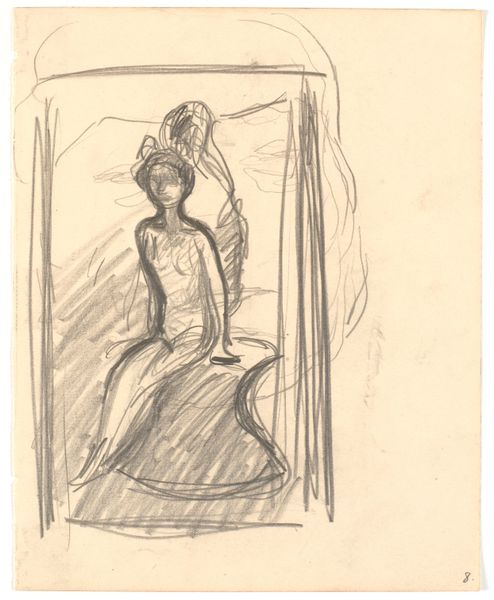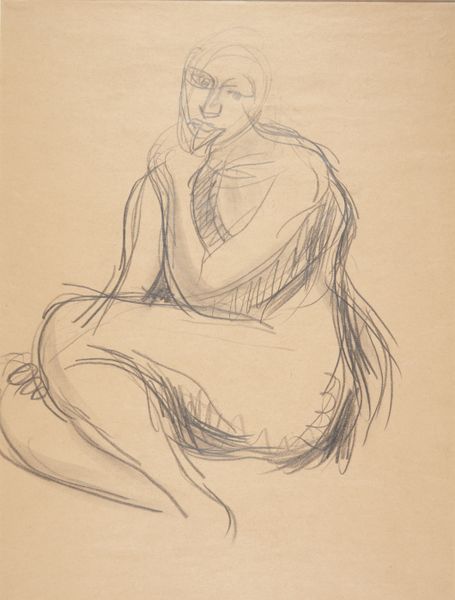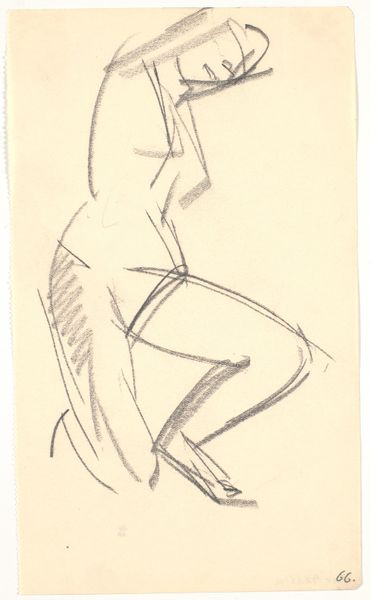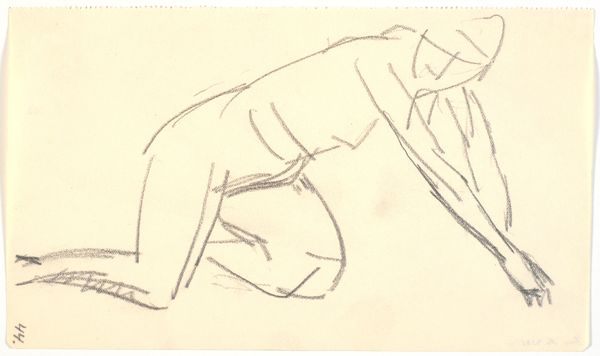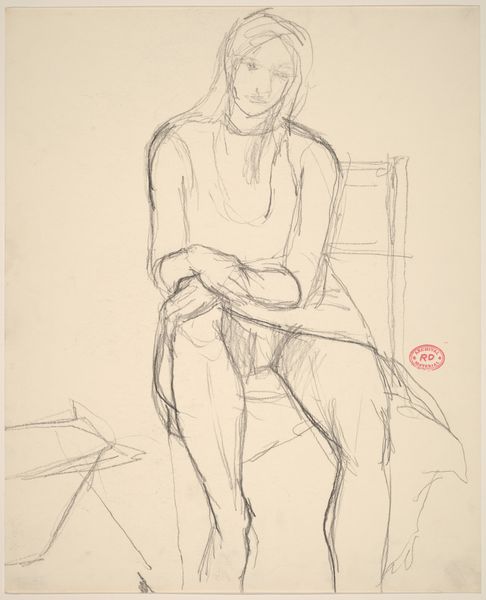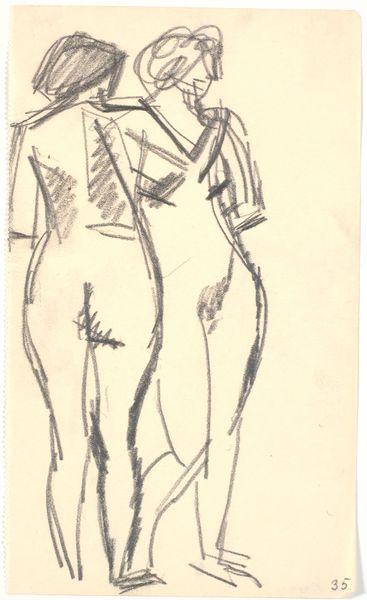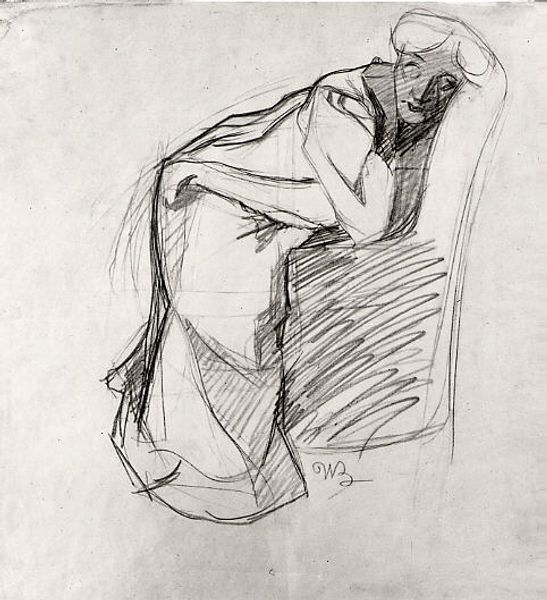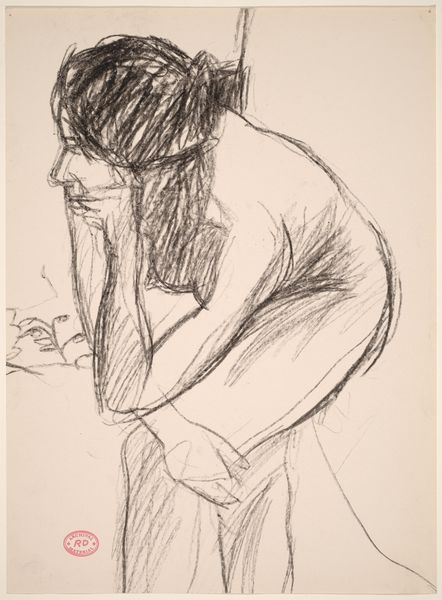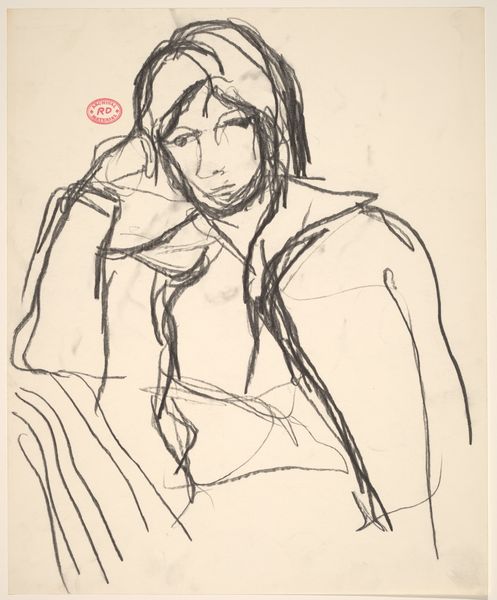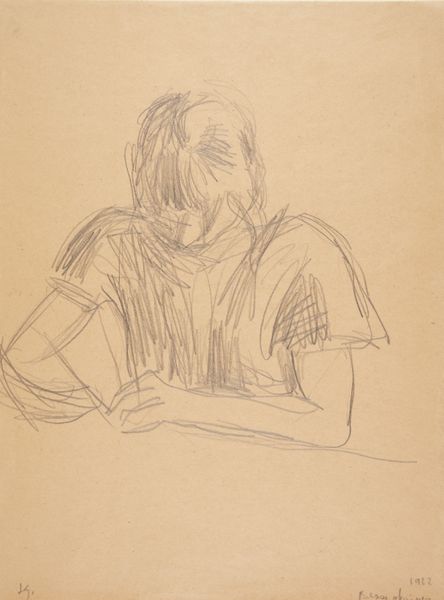
drawing, ink
#
drawing
#
figuration
#
ink
#
nude
Dimensions: 140 mm (height) x 111 mm (width) (bladmaal)
Curator: I am struck by how raw it feels, almost vulnerable. It’s just a few ink lines on a gridded page, but they speak volumes. Editor: Indeed. We're looking at "Siddende, nøgen, ung kvinde. Eva"—or "Seated, Nude, Young Woman. Eve"—a drawing rendered in ink by Joakim Skovgaard between 1914 and 1917. Skovgaard, deeply immersed in his Danish heritage and often involved in public art projects, created this work in a period marked by the First World War’s disruption to social and artistic norms. It certainly breaks from the more romantic, idealized depictions of the female nude so common at the time. Curator: Right, it's almost…anti-idealized. The grid underneath feels like it’s trying to constrain her, categorize her, but the lines of her body resist. It makes you wonder, what "Eve" is he portraying here? Is she before the fall, aware of her own existence and breaking free of expectations? Or after, burdened but resolute? Editor: Skovgaard worked a lot on monumental religious commissions and may have intended "Eva" as a commentary on the concept of original sin, questioning women's complex representations in religious iconography through a secular and critical lens. You can really read into the political dimensions of nude art during this period, examining power, objectification, and artistic freedom... Curator: See, I think you are ascribing her too much. For me, she is beyond that narrative; it's about stripping it bare – literally and figuratively. It’s about presenting the essence of humanity without the usual layers of story or idealization, capturing a quiet moment. And there's courage in that simplicity. Editor: Perhaps... It’s a stark image, demanding introspection and critical engagement with societal norms that dictate representation. It’s easy to lose the individual’s own self in grand ideological pronouncements. Curator: That's the artist's burden, I suppose - and the art historian’s dilemma, right? We both end up projecting our own prisms onto the work, hopefully opening more questions and inviting people to think more carefully. Editor: Absolutely. It's about recognizing how history shapes our present and how a simple line drawing may evoke multiple layers of perception.
Comments
No comments
Be the first to comment and join the conversation on the ultimate creative platform.
